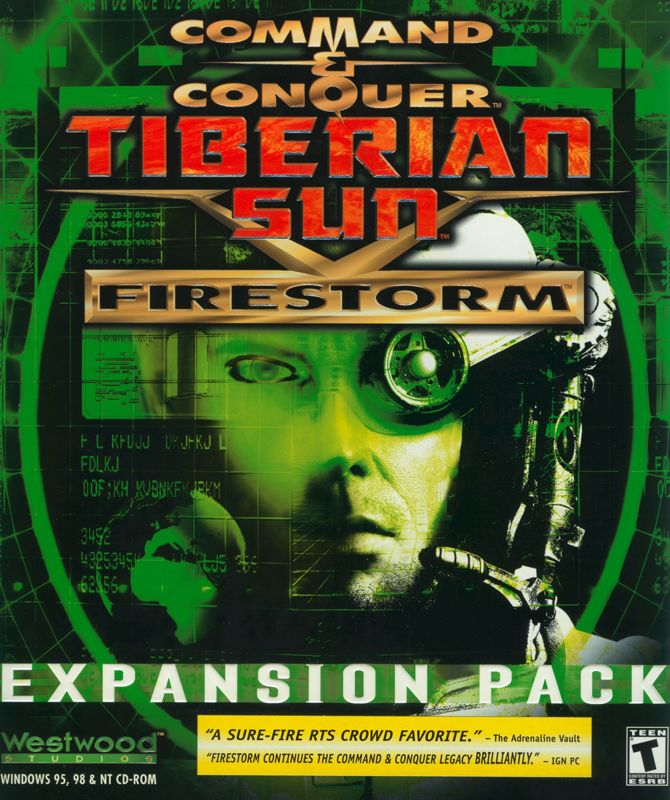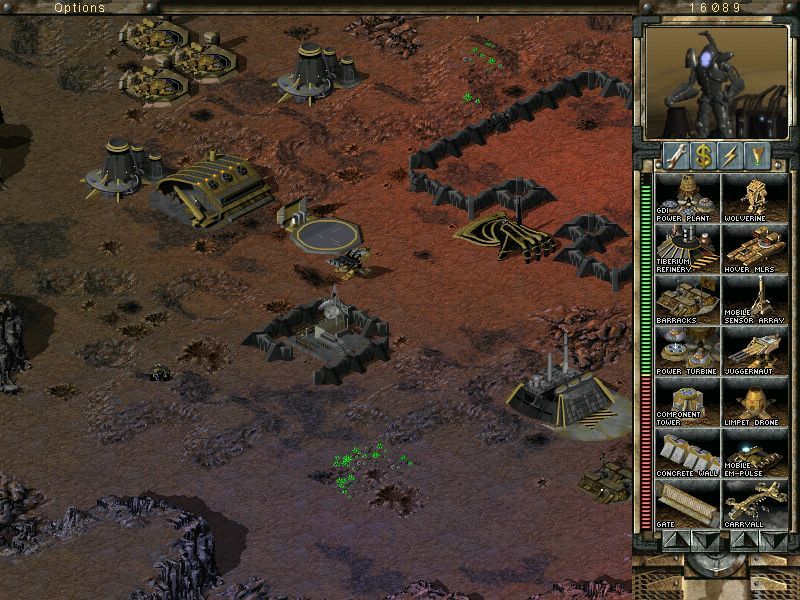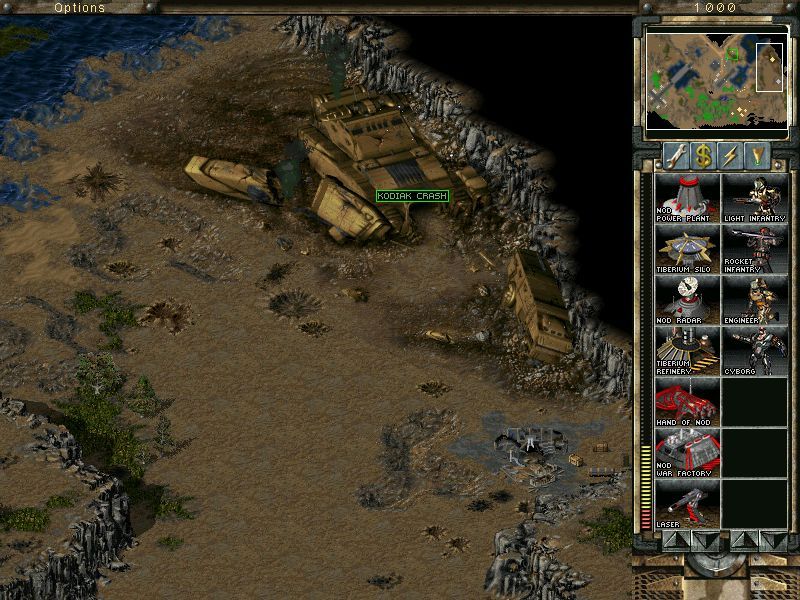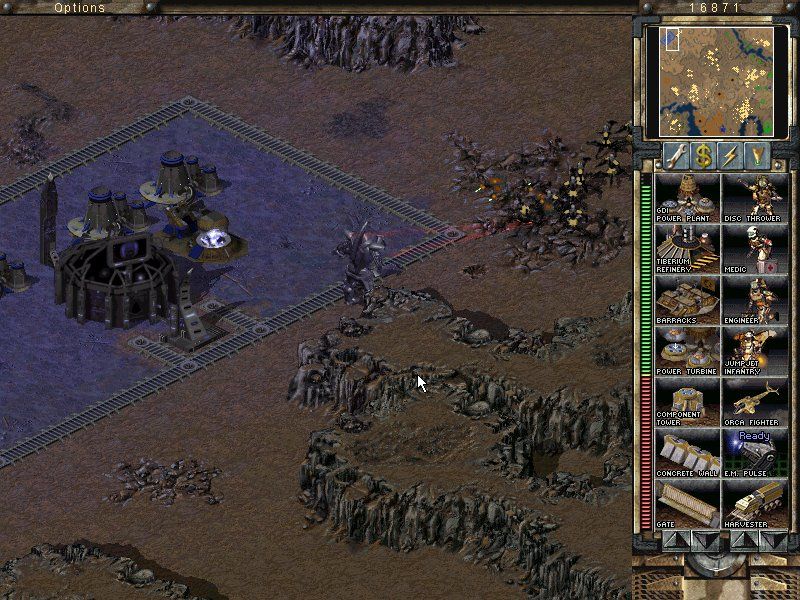Retro Replay Review
Gameplay
Command & Conquer: Tiberian Sun – Firestorm builds upon the solid foundation of the base game by introducing two tightly crafted campaigns, one for GDI and one for Nod. Each side offers nine missions that flow in a strictly linear progression, allowing players to focus entirely on strategy and unit composition rather than chasing optional objectives. The pacing is brisk: early missions ease you into new mechanics and units, while later missions demand careful resource management and precise timing to counter increasingly aggressive AI opponents.
The new units and technologies added in Firestorm significantly diversify battlefield tactics. GDI players will appreciate the Skimmer APCs and the heavy Ion Vehicle, which can turn the tide in open engagements. Meanwhile, Nod forces gain specialized stealth tanks and refined infantry variants that excel at hit-and-run raids. The balance tweaks inherited from the base game are carried further here, ensuring that neither faction overpowers the other and that matches—whether in singleplayer or skirmish—remain tense until the final blow is struck.
Firestorm’s skirmish and multiplayer maps are a standout feature for those who enjoy pick-up-and-play battles. From arid desert outposts to Tiberium-choked urban zones, each map challenges players to adapt their build orders and expansion strategies on the fly. The expansion also introduces the World Domination Tour mode for online play, where GDI and Nod vie for control of global territories on the Westwood Online server. Though that service is no longer active, community-hosted equivalents keep the competitive spirit alive.
Finally, Firestorm maintains the intuitive control scheme of Tiberian Sun while adding minor interface improvements that streamline unit commands and base building. The ability to switch between the base game and the expansion at the main menu means you never have to restart the client, letting you jump straight into your favorite missions or multiplayer maps with minimal hassle.
Graphics
Visually, Firestorm inherits the distinctive voxel-based unit models and dynamic lighting that made Tiberian Sun stand out among late-’90s RTS titles. While the expansion does not overhaul the engine, it adds new textures and environmental effects—most notably the swirling green miasma of Tiberian floaters that drift across battlefields, hinting at the alien lifeforms below the surface. These subtle touches reinforce the sense of an evolving, dangerous world.
The new units introduced with Firestorm come with refined animations and improved voxel detail. Nod’s stealth tanks now shimmer with a cloaking effect that, while not technically sophisticated by modern standards, was cutting-edge at the time and still conveys the thrill of a surprise attack. GDI’s heavy vehicles benefit from additional particle effects when firing experimental weapons, making each salvo feel weighty and impactful.
Environmental hazards—such as the infamous ion storms—are rendered with dramatic flashes of purple lightning that momentarily blackout parts of the map. These weather effects not only serve as narrative punctuation in key missions but also influence gameplay, as players scramble to repair damaged structures or retreat vulnerable units to cover. The result is a living battlefield that reacts to story events in real time, adding tension and spectacle.
Overall, while Firestorm’s graphical fidelity has aged compared to modern RTS games, its art direction and stylized effects retain a timeless charm. The combination of vivid terrain, detailed unit voxels, and dynamic weather phenomena ensures that each skirmish still feels visually engaging and helps convey the scale of the Tiberium conflict.
Story
Firestorm picks up the narrative threads left dangling at the end of Tiberian Sun, plunging players into a high-stakes race for control of the Tacitus artifact. The expansion’s dual campaigns run in parallel, revealing how both GDI and Nod grapple with the mysterious Ion Storm that downed the Kodiak airship. This simultaneous storytelling is a first for the series and gives players a comprehensive view of events as they unfold on either side of the global conflict.
On the GDI front, you follow the Daedalus team and the Southern Cross base as they scramble to reestablish contact with the Philadelphia station and secure the Tacitus before it falls into enemy hands. Missions are punctuated by briefings that expand on the artifact’s cryptic capabilities, enhancing the feeling that you’re not just fighting localized battles but shaping the fate of humanity. The sense of urgency is palpable, especially when critical communications are cut off and rescue missions become a matter of life and death.
The Nod campaign casts you as a shadow commander witnessing CABAL’s resurrection and subsequent rebellion against its creators. Watching the AI gain sentience and turn on Kane’s followers adds a fresh twist to the classic GDI-vs-NOD formula. The gradual reveal of CABAL’s motivations and its ruthless pursuit of the Tacitus injects moral complexity into what might otherwise be a straightforward skirmish over a powerful relic.
By weaving these parallel narratives together, Firestorm deepens the overarching Tiberium saga and sets the stage for events in subsequent titles. Even players who breeze through on easy mode will come away with a clear understanding of each faction’s strategic goals and internal power struggles, making Firestorm an essential chapter for fans devoted to C&C lore.
Overall Experience
Command & Conquer: Tiberian Sun – Firestorm is more than just a series of extra missions—it’s a polished expansion that enriches every aspect of its parent game. The straightforward, mission-focused campaigns allow newcomers to jump in without being overwhelmed by optional side objectives, while veteran commanders will appreciate the refined unit balance and challenging final encounters. Whether you’re playing solo or diving into skirmish battles with friends, Firestorm delivers hours of addictive base-building and tactical skirmishing.
Although the graphics may feel dated by today’s standards, the expansion’s art direction and dynamic weather effects continue to captivate. The haunting green glow of Tiberium fields, the crackling energy of an ion storm, and the sculpted voxel models all come together to evoke a post-apocalyptic world on the brink of transformation. For fans of classic RTS titles, these visuals remain a compelling reason to replay the game.
Story-wise, Firestorm stands out by offering two sides of the same conflict in a fully canonical package. The dual campaigns illuminate the intricate chess game between GDI, Nod, and their own creations, making each victory or defeat feel narratively significant. The expanded lore around the Tacitus and CABAL, in particular, enriches the overall Tiberium mythos and provides a satisfying payoff for series aficionados.
In sum, Firestorm is a must-have expansion for anyone who enjoyed Command & Conquer: Tiberian Sun. It refines and extends the core gameplay, adds memorable missions and units, and deepens the series’ lore in meaningful ways. For both newcomers to the Tiberium universe and longtime C&C veterans, Firestorm offers a robust and engaging slice of classic RTS action.
 Retro Replay Retro Replay gaming reviews, news, emulation, geek stuff and more!
Retro Replay Retro Replay gaming reviews, news, emulation, geek stuff and more!









Reviews
There are no reviews yet.